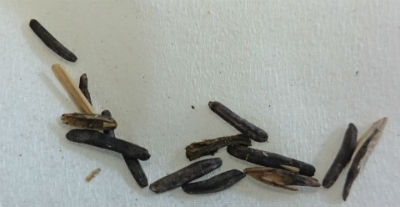Ergot
Ergots are fungal resting bodies which contain toxic alkaloids, they are very poisonous to both humans and livestock. Ergots are purplish black in colour, and a similar size to grain, but smaller pieces of ergot may also be present. The tolerance level for ergots for human consumption is 0.001 % by weight. In practice, grain samples with any ergot may be rejected. It is possible to screen out some ergot, but ergot levels become concentrated in the screenings, and contaminated screenings must be buried or burnt.
Ergot occurs in barley, wheat, triticale, oats and rye, as well as many grasses. The main sources of the disease are grasses, ergot contaminants sown with the seed and shed ergots. The fungal bodies remain viable in the soil for about 1 year, but in dry storage they can survive longer.

Ergots germinate in spring and summer to produce spores which infect grasses and cereals at flowering time. Secondary infections can then take place from head to head. The ergot bodies then develop in the grain sites, and are harvested with the grain.
Ergot is favoured by cool wet weather at flowering, so open flowered varieties tend to be more susceptible. Sterile florets are also more likely to become infected as they remain open for longer periods. Ergot is best avoided by planting clean seed. The maximum tolerance level for ergots in seed is three pieces of ergot /500 g.
In the field, burying the ergots to a depth greater than 4 cm will stop them germinating the following year. Ploughing affected fields is an effective way to bury ergots. Avoid minimal cultivation techniques as this encourages problems next season. Whatever cultivations you carry out, be aware that mature grass in headlands, set aside, road verges etc. will act as a source of spores for crops when they are in flower.
Sign up to the FAS newsletter
Receive updates on news, events and publications from Scotland’s Farm Advisory Service
